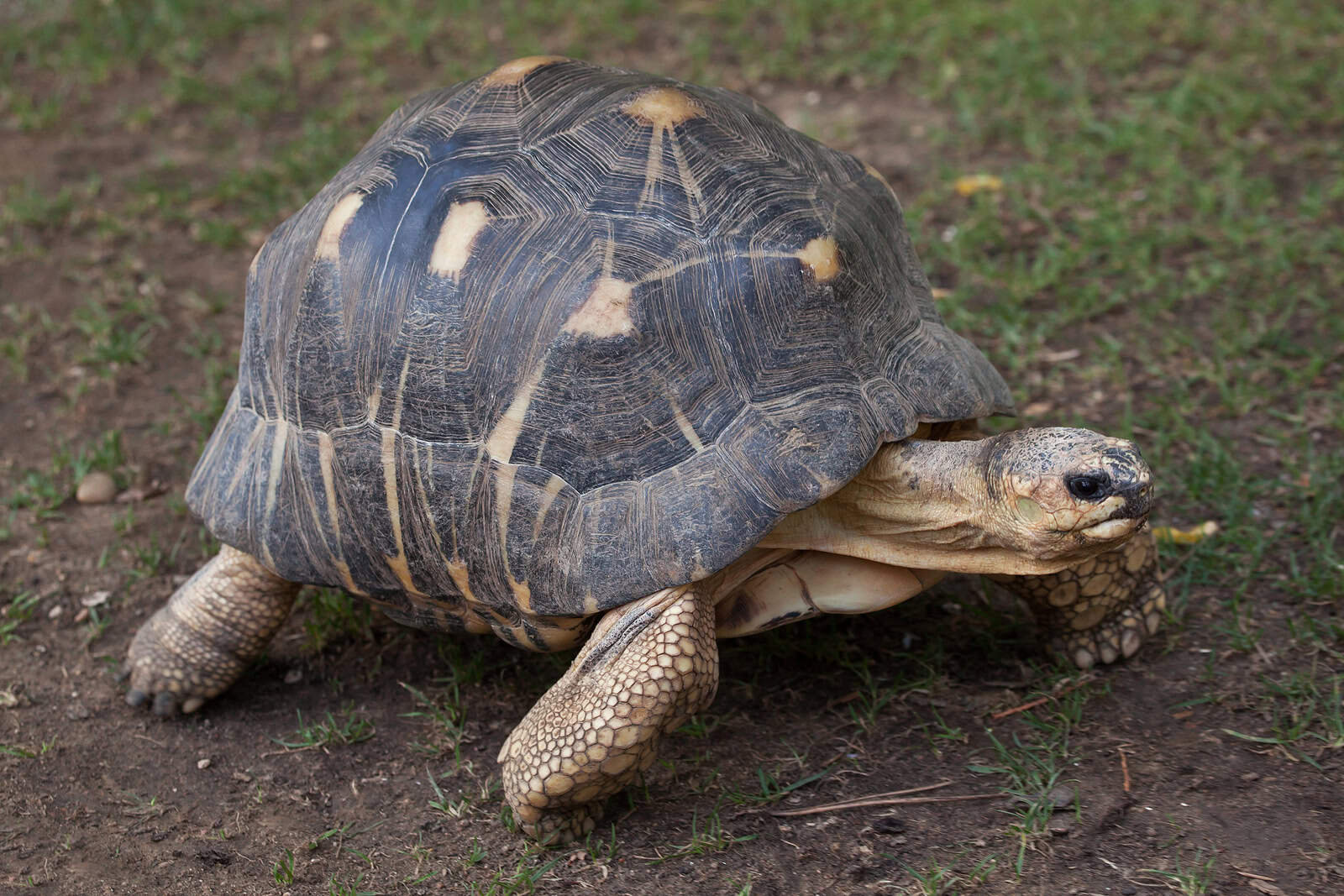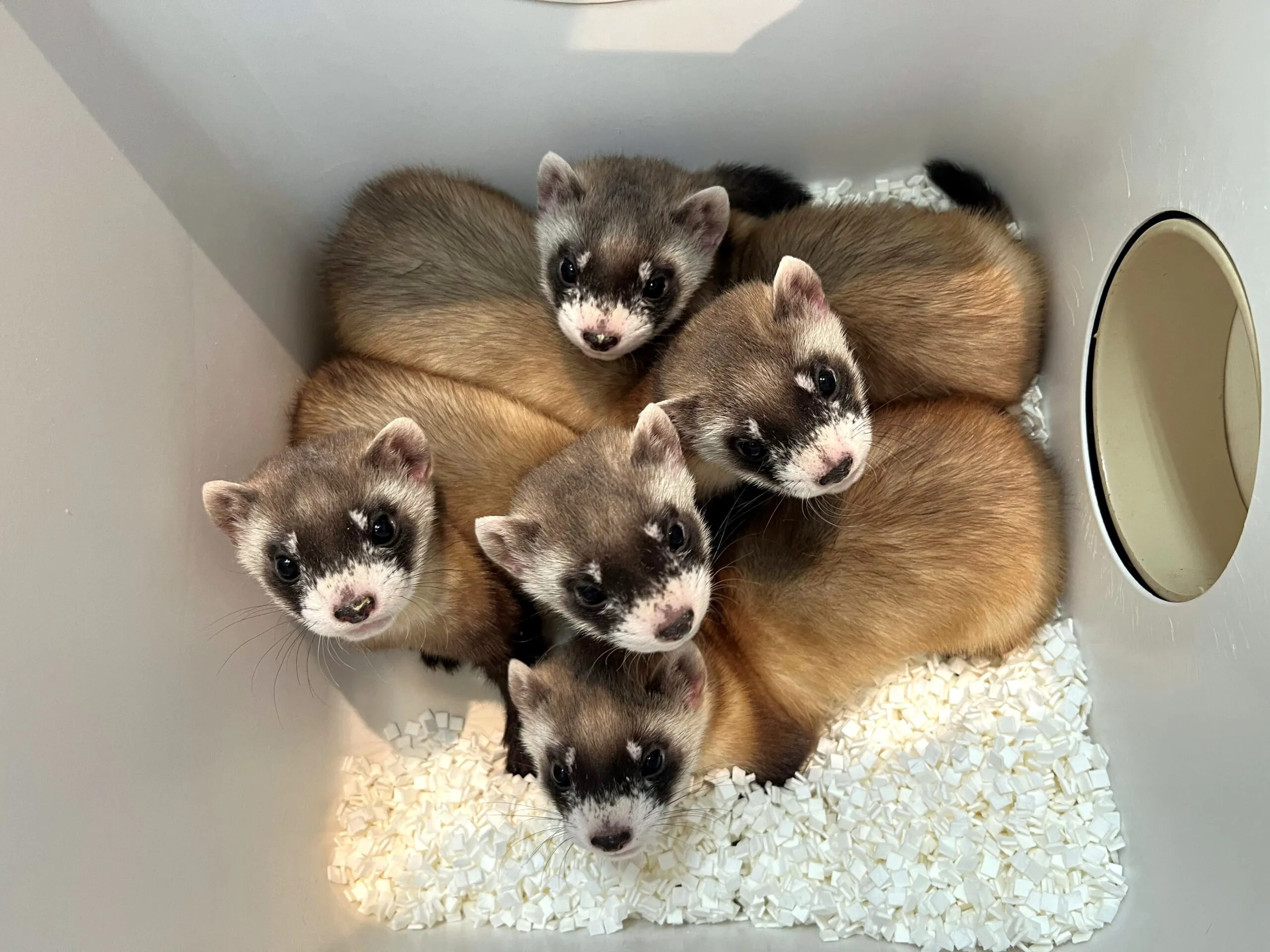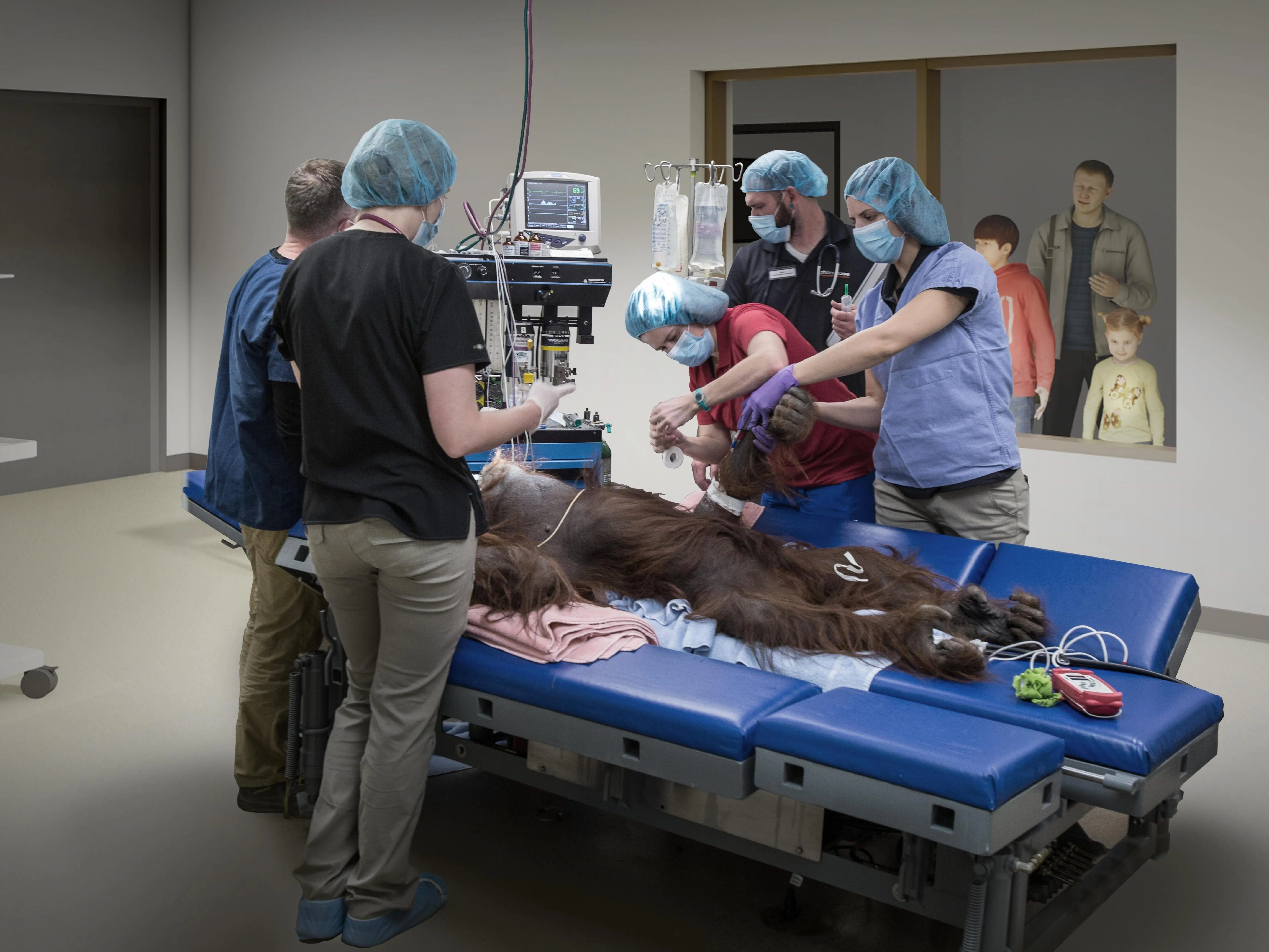Radiated Tortoise
Astrochelys radiata
What’s in a Name?
People are often confused about radiated tortoises when they hear the name for the first time. Contrary to what it sounds like, these reptiles do not emit radiation. Their name stems from the visual description of their stunning shells. Their shells, or carapaces, have a black and yellow pattern that “radiates” from a central point. One could also describe the patterns as being like rays from the sun.
Shell Feels
Turtles and tortoises are the only reptiles that have a shell on their body. Primarily serving as their best form of protection from predators, the shell is attached to internal bones, including the spine and ribs. On the outside, their natural body armor is covered in “scutes” made up of keratin – the same substance that makes up our fingernails. And believe it or not, turtles and tortoises CAN feel you touching their shell. There are blood vessels and nerve endings, so remember to be gentle!
Dwindling Numbers
Listed as critically endangered by the IUCN (International Union for Conservation of Nature), the number of radiated tortoises in their native habitat is decreasing each day. The biggest threats are habitat loss, the international pet trade and poaching for food. Organizations around the world are playing their own roles in protecting the species. In April 2018, approximately 10,000 illegally kept radiated tortoises were found in a house, amounting to the largest number of individuals ever confiscated. The Turtle Survival Alliance, a global force for turtle conservation, has been working hard to save and protect this species at all costs.

Diet: grasses, fruits, succulent plants
Zoo Diet: herp salad, hay, browse
Habitat: shrublands, forests
Length: 12-18 inches




Plan your visit today!
The Phoenix Zoo is one of the largest non-profit zoos in the U.S., caring for over 3,000 animals, with nearly 400 species represented, including many threatened/endangered species.

Plan your visit today!
The Phoenix Zoo is one of the largest non-profit zoos in the U.S., caring for over 3,000 animals, with nearly 400 species represented, including many threatened/endangered species.








